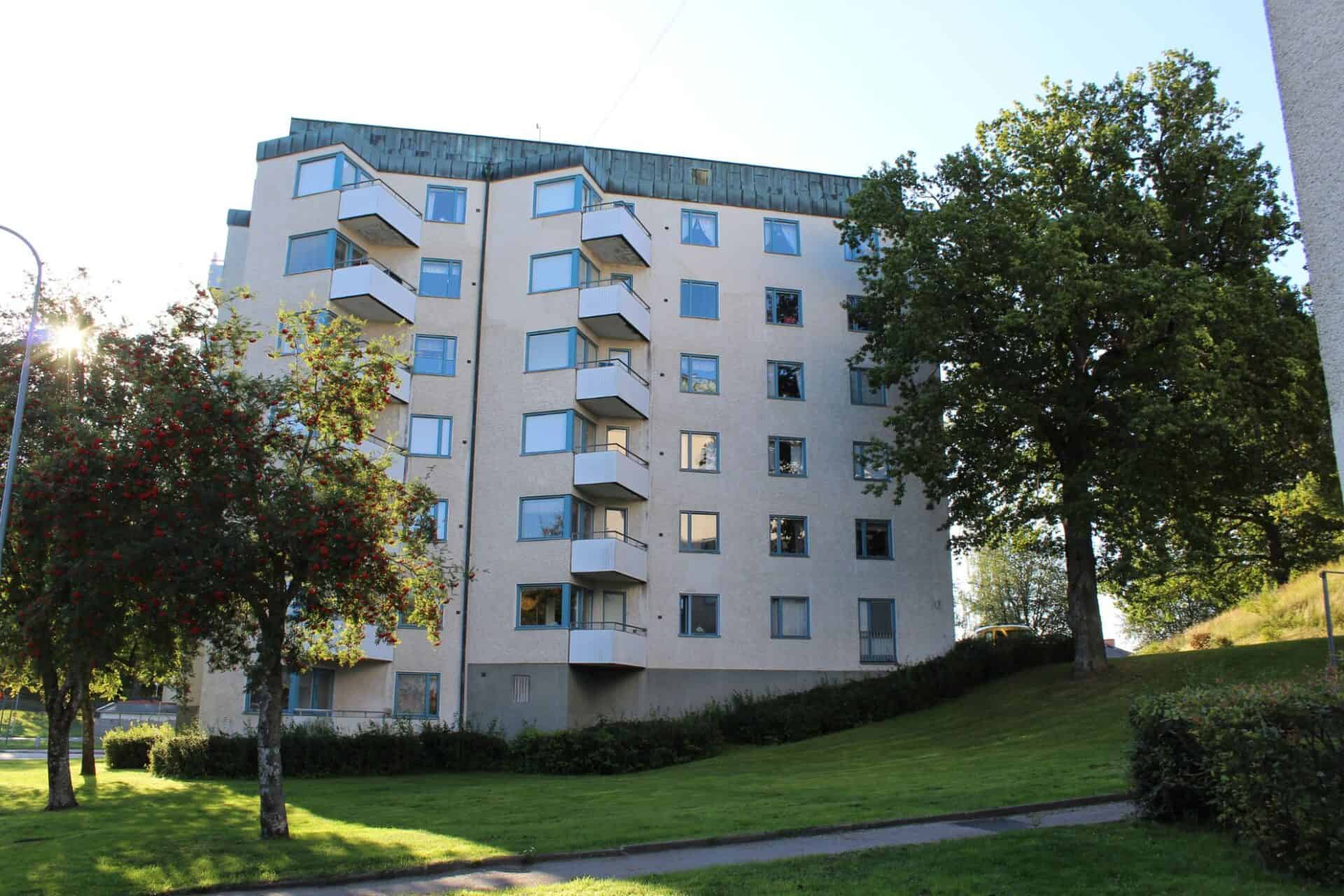Gladsheim Improves Efficiency through Energy Optimization and Innovation
Christer Fors is the Head of Sustainability at Gladsheim, a real estate company that acquires, manages, and develops rental properties in mid-sized Swedish towns. He supports the management organization in matters related to property IT and sustainability, with a particular focus on energy optimization. The goal is to increase property value, improve cash flow, and secure long-term green financing.
Maximize Property Value with Gladsheim’s Four Steps to Sustainability
Gladsheim maximizes property value and reduces its carbon footprint through a structured four-step sustainability strategy:
- Energy Auditing: They begin by carefully collecting data on energy use at the building level, providing a clear picture of the property’s status each quarter. This precision gives an early indication of any issues and opportunities for improvement.
- Operational Optimization: Based on the audit, they identify issues affecting the property’s carbon footprint, such as leaks or unnoticed ventilation problems. Quick actions with short payback times are implemented to improve efficiency.
- Energy Optimization: After optimization, long-term measures are taken to further improve performance and reduce the property’s carbon footprint, contributing to better efficiency and increased sustainability.
- Production and Sharing: Finally, they invest in sustainable energy production and sharing, which further reduces energy use and enhances the property’s energy optimization.
Once the property has achieved its best possible performance, the next step is to identify measures for further energy optimization. This is where BIM Energy comes into play. Projects are then evaluated based on two criteria:
- Which proposal provides the best return and net present value?
- Can we elevate the property’s performance to a level that qualifies it for green financing?
Elevate the Property to a New Level with BIM Energy
Using calculations in BIM Energy, Christer Fors can convincingly explain to management and banks how a property can be renovated and improved to reach an entirely new level of efficiency. To persuade the board and management about which actions should be prioritized, relying on approximate experience values is not enough. Christer needs precise calculations, reliable results, and a detailed energy audit, which BIM Energy delivers.
Precise Calculations for Improved Energy Performance
Christer quickly models the property’s current condition in BIM Energy, allowing him to describe the specific building in great detail, including previously implemented measures.
Previously, he received calculations from suppliers based on assumptions about standard buildings of a certain age, which often led to savings estimates that did not align with the property’s actual situation. This resulted in recalculations, which were both time-consuming and not always entirely accurate.
By using BIM Energy, the property’s performance and carbon footprint can be quickly and accurately simulated, providing reliable and precise calculations. This helps identify the most profitable options for energy optimization. This saves time, minimizes errors, and ensures that the property is optimized to reach its full potential and qualify for green financing. BIM Energy enables well-informed decisions, leading to better financial and environmental outcomes.
Klubben 5: How Gladsheim Improved Energy Consumption with BIM Energy
In a project where Christer Fors at Gladsheim used BIM Energy, they worked with the property Klubben 5, which had high energy consumption. The goal was to reduce this consumption by at least 20%. The property previously had an exhaust air recovery system that had been disconnected, and initially, they considered installing wastewater recovery. However, after careful calculations in BIM Energy, it was found that the low water volumes would not yield a significant profit.
Effective Measures for Improved Energy Consumption
However, after careful calculations in BIM Energy, it was found that the low water volumes would not yield a significant profit, making it more profitable to install a new, functioning heat pump for the ventilation system to recover heat from the exhaust air. Christer also included other important measures such as window replacement, which would not have been implemented if it weren’t for the specific goal of reducing energy consumption.
Thanks to these measures, the property’s carbon footprint improved significantly, and it went from energy class E to energy class C. BIM Energy also proved invaluable for testing different operating modes, such as increasing ventilation flow, which helped further optimize the property’s energy use. These successful efforts future-proofed the property and qualified it for green financing.
“BIM Energy feels very easy to work with; if you’ve done your groundwork in the energy monitoring system, it’s very easy to know which numbers to enter above expectations.”
The Three Biggest Advantages of BIM Energy According to Gladsheim
Christer Fors at Gladsheim highlights three major advantages of BIM Energy that have transformed how they work with property energy optimization:
- Documentation Based on Extensive Experience: BIM Energy is based on the long-proven VIP-Energy, a tool that energy engineers have been working with since the 1990s. This allows for reliable documentation of the property’s current status, providing a strong foundation for future energy optimization.
- Simulation of Measures for Better Decisions: With BIM Energy, Christer can easily simulate different scenarios to find the most effective solutions. An example is the property Klubben 5, where they initially thought wastewater recovery would be beneficial. But through simulation in BIM Energy, they discovered that it was more advantageous to activate exhaust air recovery with a new exhaust air heat pump, which turned out to be the best solution for the building.
- Easy Sharing of Calculations: Another major advantage of BIM Energy is how easy it is to share calculations and results with other stakeholders, such as suppliers of heat pumps and units, energy experts, contractors, banks, and management. This facilitates collaborations and makes it easy to report the results and how they were achieved.
Competent and Responsive Support from the BIM Energy Team
Christer Fors is very satisfied with the contact with the BIM Energy team. They have proven to be both competent and accessible. An additional plus is that the team has been responsive to specific needs within energy auditing. For example, when Gladsheim felt a need to more accurately describe district heating prices in the program, the team quickly addressed this and complemented the program so that it can describe how district heating prices fluctuate over the year.
Increased Efficiency and Quality with BIM Energy
Before Gladsheim had access to BIM Energy, they worked with their own calculations and external consultancy support, which was often time-consuming and costly. Bringing in external consultants meant that a lot of time was spent explaining the project’s goals and getting everyone on the same page, leading to varying quality and many investigations that never materialized.
Now, with BIM Energy, Gladsheim can get answers much more quickly and with higher precision about which measures are profitable through qualitative calculations, which has improved both efficiency and results in their work with property energy optimization.




